“Great Expectations” Cinematographer Dan Atherton Goes Dark with Dickens
How dark is too dark? For fans of Peaky Blinders, the BAFTA-winning period crime series created by Steven Knight, bleak is better. In adapting Charles Dickens’s “Great Expectations,” Knight ramped up the vice and violence for a six-part FX/Hulu series running through April 23) that introduces opium, sadomasochism, attempted suicide, prostitution, F-bombs, and literal butchery to Dickens’ 19th-century novel-centered on the poor but clever orphan Pip. After being groomed by the wealthy Miss Havisham (Olivia Colman) and her chilly adopted daughter Estella (Chloe Lee/Shalom Brune-Franklin), Pip (Tom Sweet/ Fionn Whitehead) travels to London in hopes of becoming a “gentleman” under the wing of the amoral lawyer Mr. Jaggers (Ashley Thomas).
Knight’s stylized take on Great Expectations gains force through the edgy visuals captured by cinematographer Dan Atherton. “The darkness — that’s what I loved about the script,” says Atherton. “I wanted to honor that because Steven Knight’s story lets you go to dark places, and as a cinematographer, that’s a joy.”
Atherton attended National Film & Television School and, in 2020, won the British Society of Cinematographers’ prestigious BSC Short Film Award for The Passenger. Hired by Expectations director Brady Hood, his former classmate, Atherton operated the camera himself and spent 110 days shooting the series’ first four episodes at locations throughout England.
Speaking from his home in London, Atherton delves into Great Expectations‘ ghostly atmosphere, describes how he made Miss Havisham look creepy from inside a 16th-century castle, exalts the 2006 movie Children of Men, and explains the meaning of “mud re-set.”
Great Expectations features gorgeous costumes in the grand tradition of period dramas , yet your cinematography is anything but traditional in the way it pushes the story to interesting places
Thank you.
For example, in Episode One, we see Pip in this vast marsh that’s stripped of nearly all color. What were you aiming for in rendering this frosty, bleached-out, fog-shrouded landscape, and how did you achieve it?
We stripped back a lot of the color to make it feel ghostly. That’s how we wanted to introduce this atmosphere and make it feel mysterious, where anything could be behind those clouds and this mist. We shot on real marshland in Essex, with a green screen behind it so they add a bit more atmosphere in post.
How did you achieve that bleached-out look?
It was mainly done in the color grade.
How does that work?
It dates back to film time when you had your red channel, your blue channel, and your green channel. If you mess around and put more blue in the red channel, it creates this unusual color effect on the costumes, the skin tone, the makeup. So in post, we achieved these looks digitally by mixing the channels. The colorist Toby Tomkins and I looked at references from [cinematographer] Bruno Delbonnel and [colorist] Peter Doyle. We found a channel mix for the marsh that gave it that ghostly feel. We had different mixes for different locations — London, Miss Havisham’s, the marshes, and Pip’s home — each had a different channel mix.
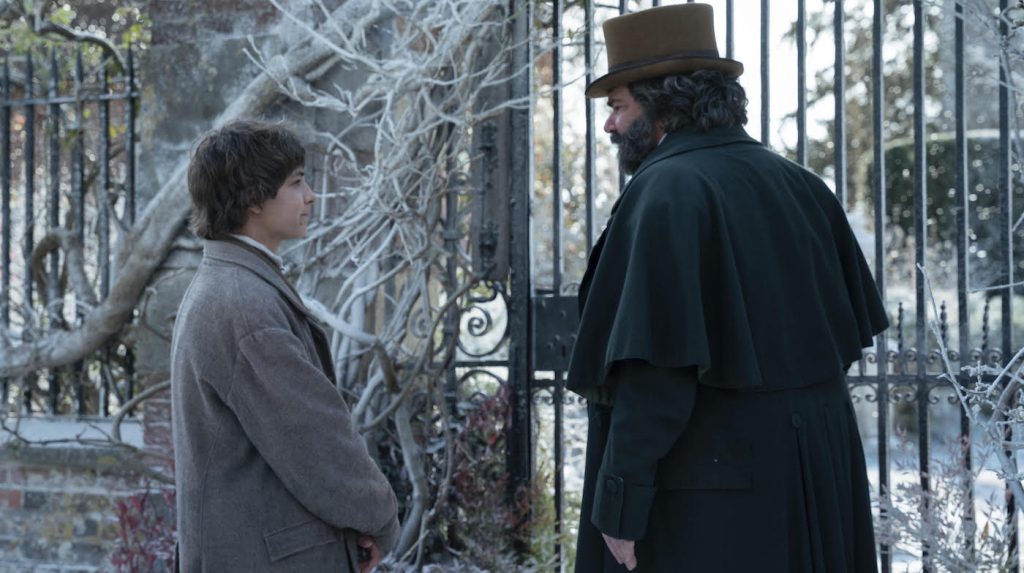
Early on, you capture this epic mud brawl between two escaped convicts. There’s muck flying all over the place!
That scene was never meant to be as muddy. It’s only because it rained loads the night before, so the ditch we were going to shoot in turned into a mud pool. The actors just go with it, the costume team goes with it, the cameras go with it – we lost a lot of shoes! And you can just imagine mud re-sets.
Mud re-sets?
After each take, they’d have to re-set the mud to make it look like our characters had just gotten there. This was right at the beginning of production, so that [mud fight] sort of set the tone for the rest of the shoot [laughing].
In contrast to the mud and the frosty marsh, you go with this warm, naturalistic look whenever Pip visits his friend Biddy, where the frame suddenly lights up with green grass and blue sky. Was this contrast built into the design?
Yes totally. It was a very conscious effort and not just Biddy – we saw home versus London versus Havisham’s [mansion] as three very different worlds. And it starts with the lighting. At home, candlelight informs the key on the face with warm light, whereas in London, candlelight never keys the characters’ faces. It’s sunlight, and this dark cool ambiance takes over. Subtle differences in the lighting help make the two spaces feel different.
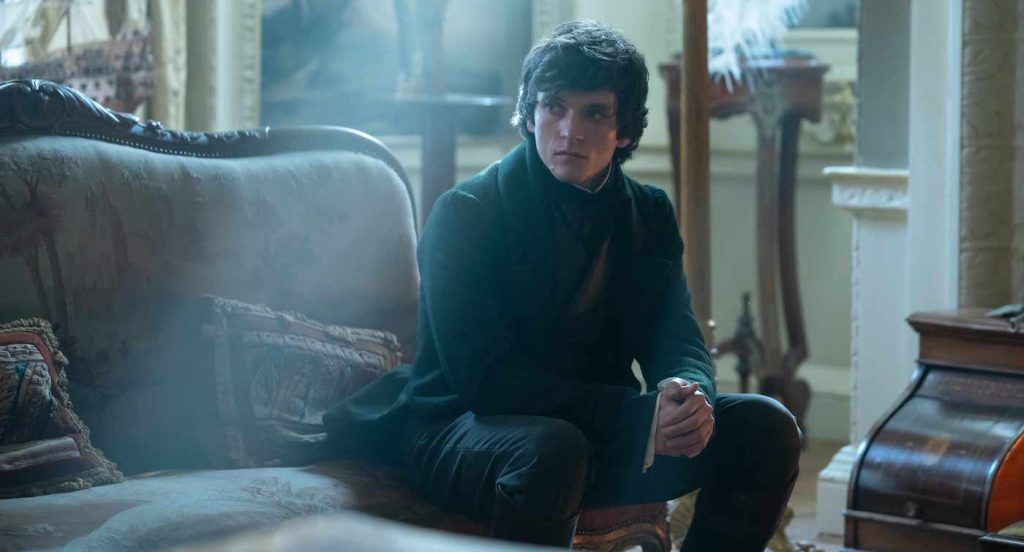
It feels almost like a fairy tale when Pip shows up at the gates of Miss Havisham’s mansion and meets Estella for the first time, with snow gently falling all around. What were you going for there?
That scene needed to feel a little romantic, so we used snow cannons to create this floaty snow when Estella comes to the gate and the music swells. Here’s Pip, there’s Estella, and then BANG!—we cut indoors to Miss Havisham, the daylight’s stripped away, and it’s very dark.
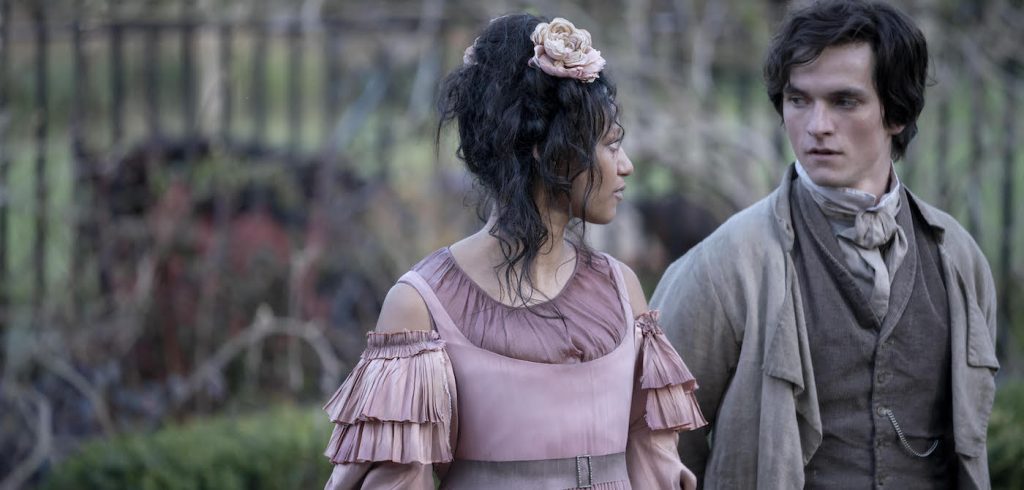
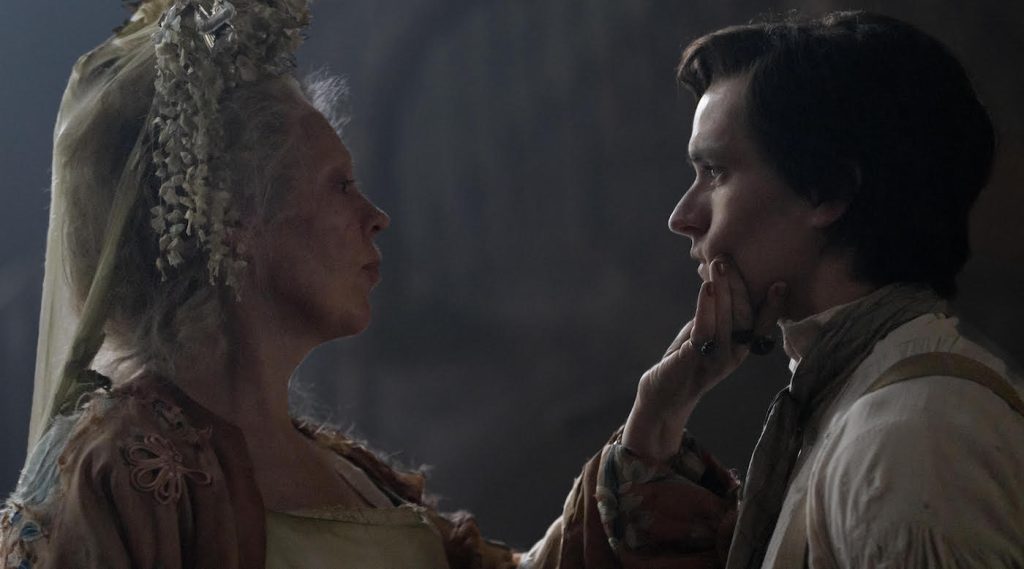
You shot Miss Havisham’s drawing room scenes inside Shirburn Castle, built in the 16th century. How did you set up the lighting for those creepy sequences?
In the script and the book, all the shutters in Miss Havisham’s drawing room are closed. To me, that meant she needs candlelight and firelight. But during our costume and makeup tests, firelight made Miss Havisham seem warm and familiar, crossing over too much with the feeling of home. I decided to open up slits of daylight, allowing small soft pools of daylight to come through and sort of wrap around her face. Putting stark sunlight on Miss Havisham made her feel a bit dead and also made the costumes sing a little bit more. With little hints of firelight to pick up her earrings and crown.
Olivia Colman is terrifying as Miss Havisham. Is she the type of actor who goes from zero to sixty when the director calls “action,” or does she need to stay in character between takes?
The former, for sure. Olivia’s very funny. She’d make me laugh just before they call action, and I’d have to stop laughing to keep the camera from shaking while she and Fionn, who played Pip, would snap into character like that [snapping fingers]. Olivia wasn’t precious at all. She’s fun, bubbly and a really giving person.
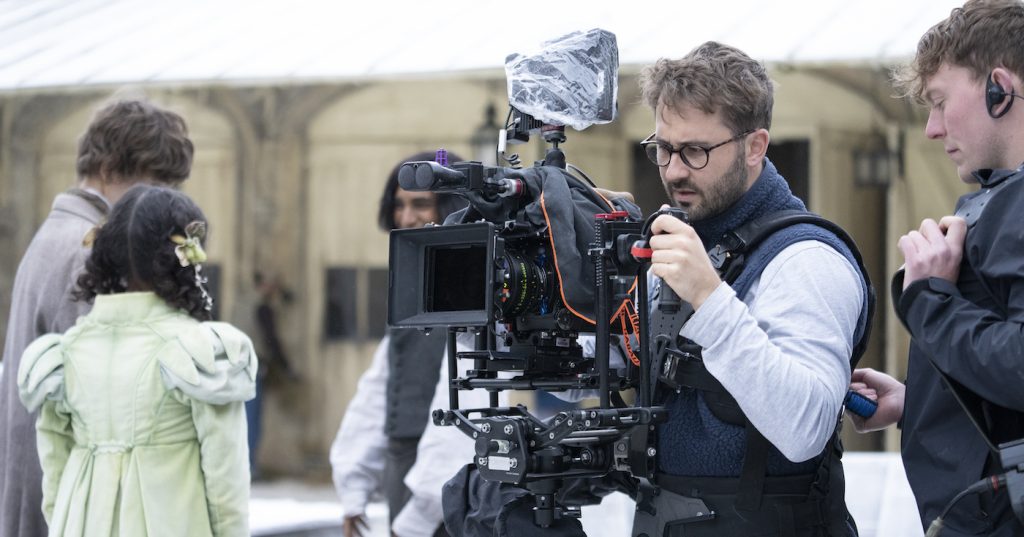
You operated the A camera yourself on Great Expectations. What do you enjoy about operating?
I suppose what drew me to Steven’s script is it’s about how your mentors can be bad for you and f*** you up. Estella with Miss Havisham and Pip with Jaggers. To capture the energy in those performances, I’d push the camera in really close on the two heads together, and then I could swivel left and right to show their reactions. And all of that was improv in that I’m just responding with the camera to what the actors are doing, and this goes to Brady [Hood]’s vision. He wanted to create a certain energy, an immediacy that you couldn’t achieve from just doing cuts from a shot and reverse shot.
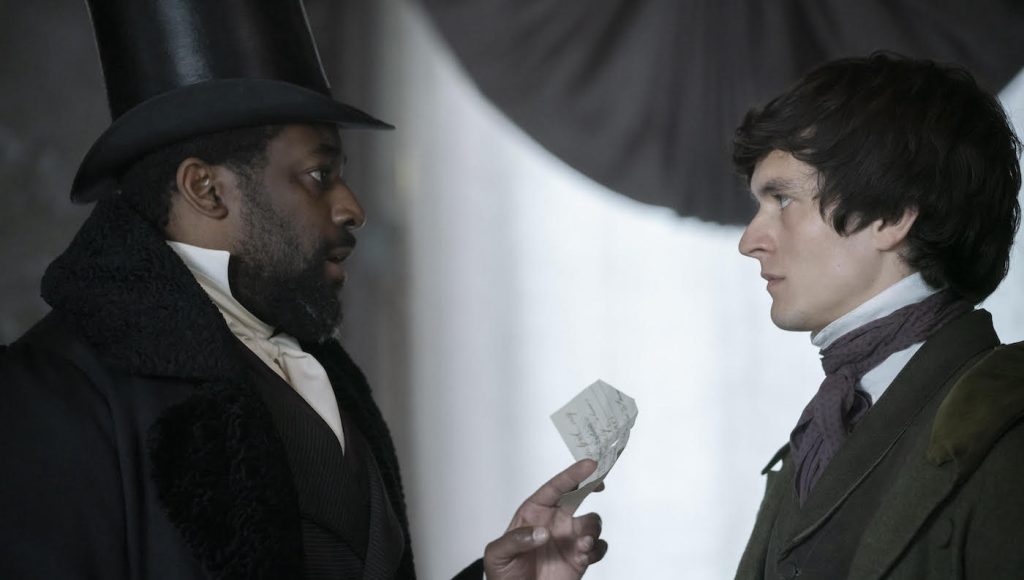
What kind of camera did you use?
The ARRI Alexa Mini LF with Supreme Prime lenses. It’s lightweight, and it fits on the [Steadicam stabilizing device] ZeeGee. That allowed me to operate handheld and carry [the rig] for 110 days.
Did you and director Brady Hook reference other films when you conceptualized your approach to Great Expectations?
One of my favorite films is [Alfonso Cuaron’s 2006 sci-fi thriller] Children of Men. Cinematographer Emmanuel Lubezki‘s work is amazing and very relevant to this project because the nature of a period drama is that you’ve got a lot of costumes, an art department, and visual effects to the point where it becomes like the proscenium of a theater. What we love about Children of Men is that it uses the wide angle lens, gets into the action and gives the camera the license to be its own narrator. In Great Expectations, the camera can transfer from one character transfer to another character to another piece of information in ways that help sell the atmosphere of Steven Knight’s world.
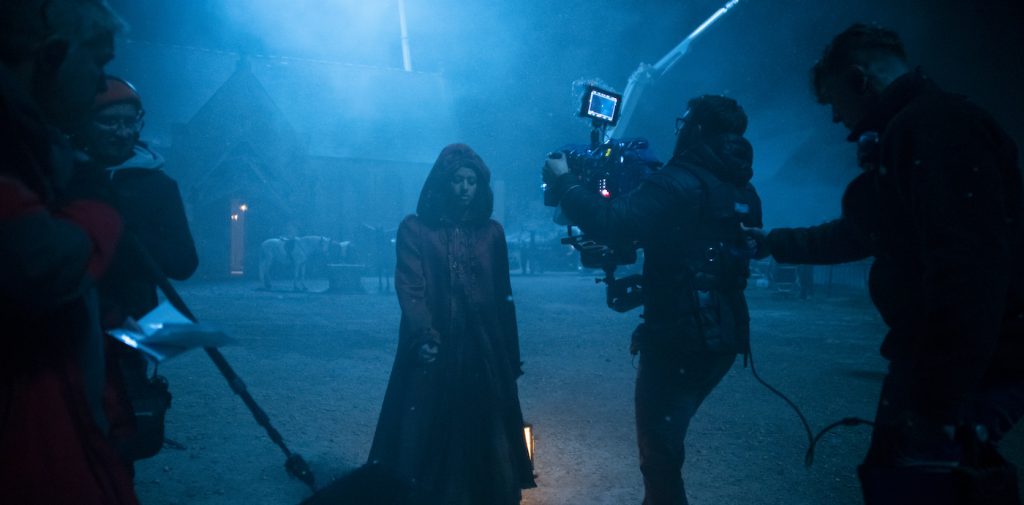
By the time you enrolled at National Film & Television School to study cinematography, you’d already decided to become a DP. When did you first pick up a camera?
Growing up in the countryside, I was thirteen years old when my best friend got a miniDV camera for Christmas. We loved Scorsese films, so with another friend, the three of us would go into the village and make gangster films. I was the worst actor, so my character always died first, and I got lumped with the camera. Ever since then, I haven’t really let go of it.
New episodes of Great Expectations stream on Sundays on Hulu.
Featured image: “GREAT EXPECTATIONS” — Episode 3 — Pictured (L-R): Olivia Colman as “Miss Havisham,” Shalom Brune-Franklin as “Estella.” CR: Miya Mizuno/FX



